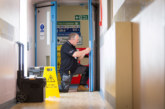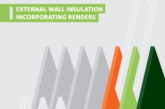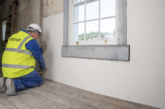The UK’s only manufacturer of fire-resistant mineral insulated cables has welcomed the Building Safety Act 2022’s passage into law as a ‘step in the right direction’ yet believes more still needs to be done when it comes to protecting occupants.
The Act is intended to create lasting, generational change to the way in which high-risk and high-rise residential buildings are both constructed and maintained. It also enshrines in law the Building Safety Regulator at the Health and Safety Executive (HSE) to provide oversight of the new system with powers of enforcement and sanction, whilst a Construction Products Regulator will also have powers to remove dangerous products from the market.
Wrexham Mineral Cables believes that Dame Judith Hackitt’s recent comments that there has been too little progress on improving building safety since her Independent Review of Building Regulations in 2018 drive home the urgency to put all unidentified fire safety hazards — such as the true fire scenario testing of fire-resistant cables — under the spotlight. And until this happens building safety will remain on a knife edge.
Fire resistant cables play a fundamental role in ensuring that building critical systems — including emergency lighting, sprinkler systems, emergency generators, emergency voice comms, fire monitoring systems and smoke extraction systems — continue to function beyond dynamic fire events, providing vital time for the safe passage of occupants. In the case of a high-rise building, these circuits must do everything possible to continue sounding the alarm, maintain visibility and extract smoke and fumes, especially in the event of entrapment within the building. It’s alarming to think that so many fire rated products were deemed not fit after the enquiry, yet the one product that is essential for the heartbeat of the building continues to undergo fire performance tests that are not fit for purpose in real-life fire scenarios.
Under current testing standards, only fire-resistant cables that are greater in diameter than 20mm must undergo testing for direct impacts to reflect falling debris, and water jet testing on a single test sample. This rules out almost 90% of the entire MICC cable range as their diameters are under 20mm.
Steve Williams, Commercial Manager at WMC, commented: “We welcome the Building Safety Act yet there is still some way to go to ensure occupant safety. Whilst this legislation will make everybody in the supply chain more accountable throughout the various stages of the building’s existence, we can only truly make buildings safe by identifying all possible hazards. We still don’t believe this is happening.
“Despite the continued focus on building safety, sadly there are simply too many cables classed as fire resistant that would not be adequate in the event of a fire, as the tests do not represent real-life scenarios. This is putting lives at risk. We strongly believe there should be a higher classification of cables introduced to identify those which can survive, rather than simply resist fire. With the passage of the Building Safety Act, we should no longer aim for minimum compliance to get the job done. Introducing a higher classification of cables would help people in positions of responsibility identify fire resistant cables which can survive, rather than simply resist fire.”









